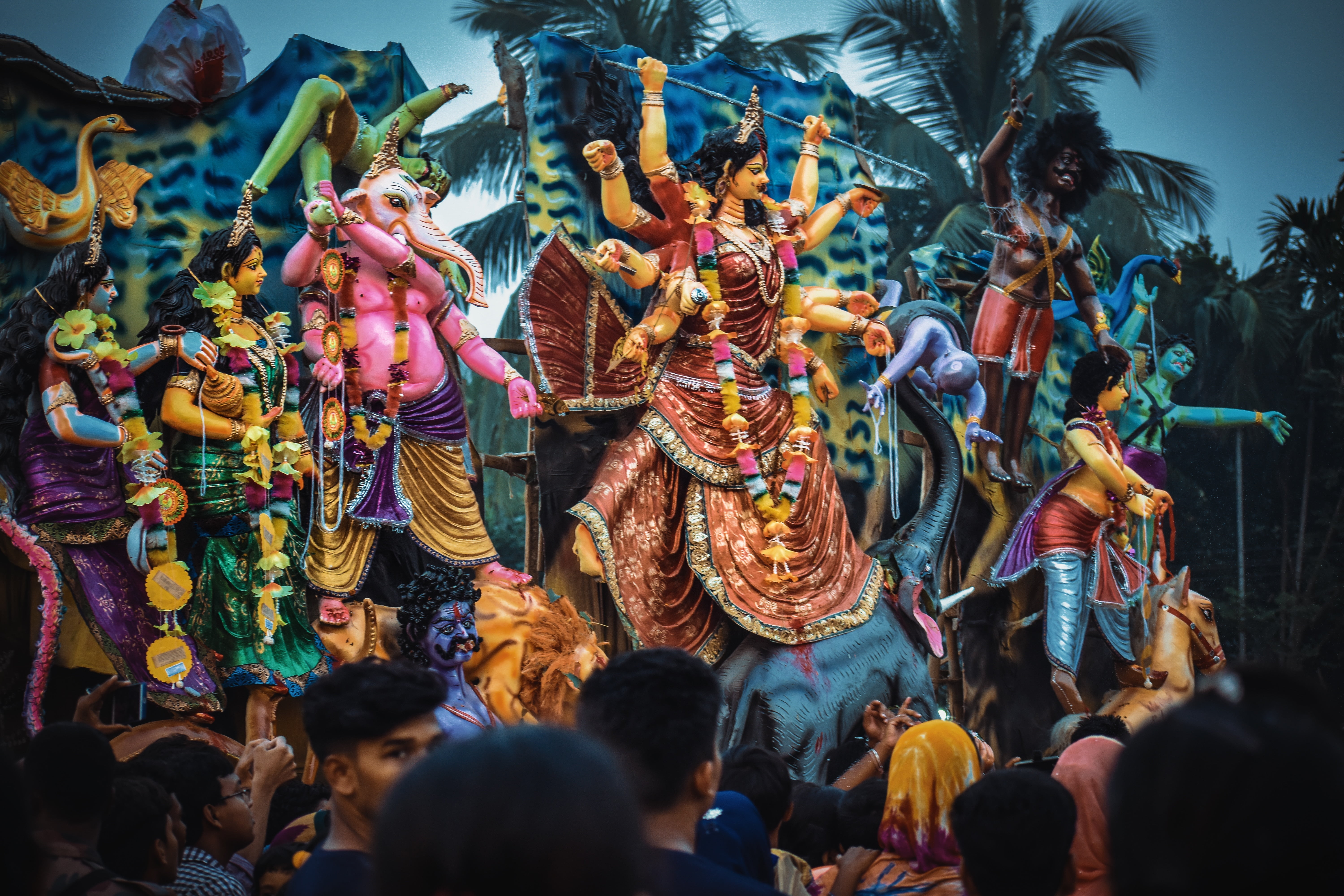The weather is turning. The mornings and nights are getting cooler. The distinct fragrance of shiuli flowers is in the air. ‘Pujo’ is almost upon us!
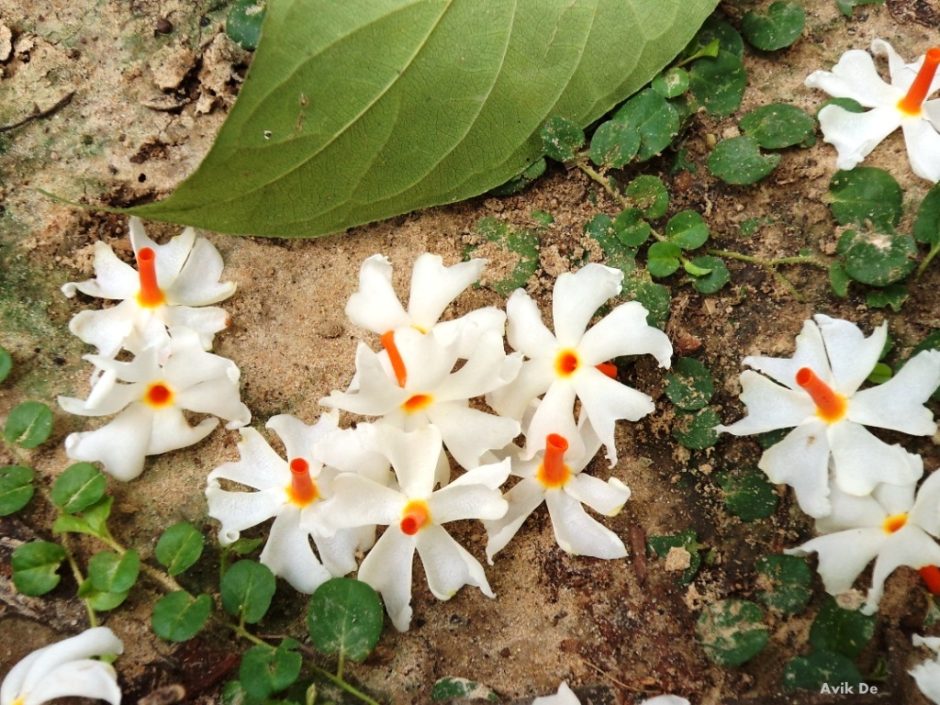
For Delhi Bongs like me, these are the clear signs that the four (maybe even five!) days of unlimited fun are here. Durga Puja is the time of the year when one can see the Bengali community blooming, much like the shiuli flowers. For most of us, this is the time to engage with the vast Bengali community in the city. This is the time for unlimited khichudi bhog and fish cutlets too!
Preparations for the festival begin much earlier though. Many of the pujo committees have their members, young and old, put up plays or dance/music shows. Rehearsals for those shows are my most distinct memories of Pujo. In fact, ‘probashi Bangalis’ like me mostly learn their share of Bengali pop culture (that includes Rabindra sangeet!) during this time. Listening to those agomoni songs to welcome Durga Maa and learning the lines of Banchharamer Baagan … If that doesn’t stir the nostalgia, nothing can. I envy the young ones for whom these are still first-time experiences.
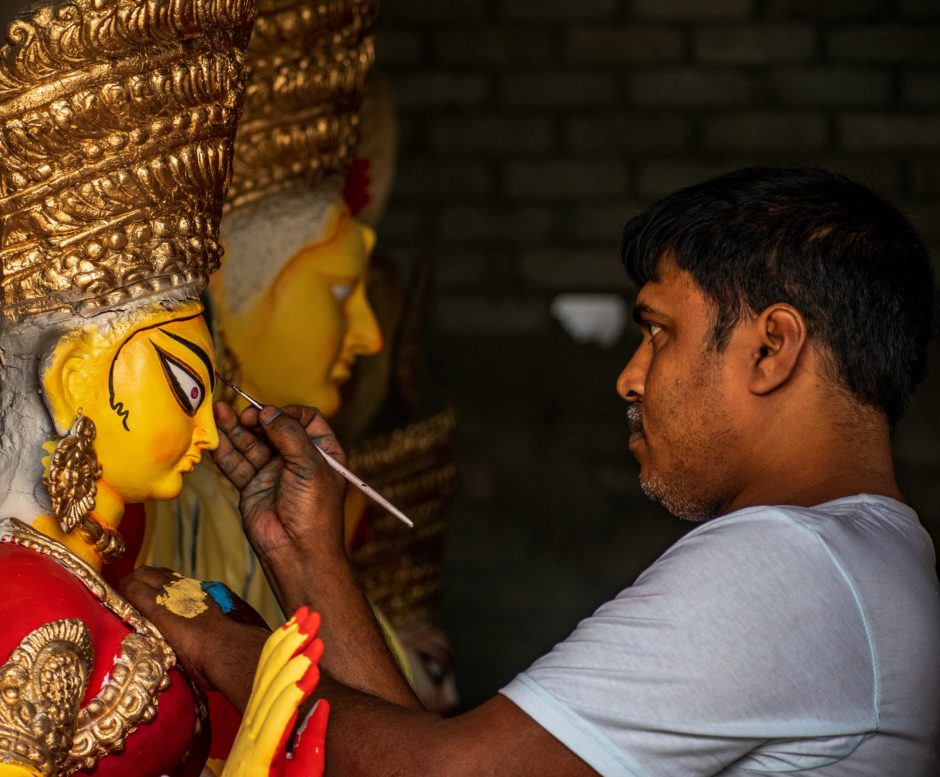
There are also various competitions held for the children. The bigger pujo committees start conducting these much earlier due to the sheer number of people involved.
So what does a typical Pujo involve? For a few weekends before Pujo, Bengalis flock to the malls and markets. Wearing new clothes during the festival is considered to be auspicious. I use this time to unearth my mother’s years-old sarees, choosing which ones I can wear that year!
Around this time, I always used to get a lesson on the story of the festival. The first day of Pujo actually coincides with the first Navratra. This day is called Mahalaya and heralds Durga’s descent to Earth after defeating the evil demon Mahishasur. One will find most Bengali households awake at 4 a.m. and listening to the invocations songs. It is believed that during the four festival days, Goddess Durga, along with here four children Saraswati, Kartik, Laxmi and Ganesh (yes, Laxmi and Ganesh are siblings as per Bengalis), visits her maternal home. It is also believed that she descends to earth using a certain mode fo transportation, such as boat, horse, or elephant. This determines the weather patterns for the days preceding the festival.
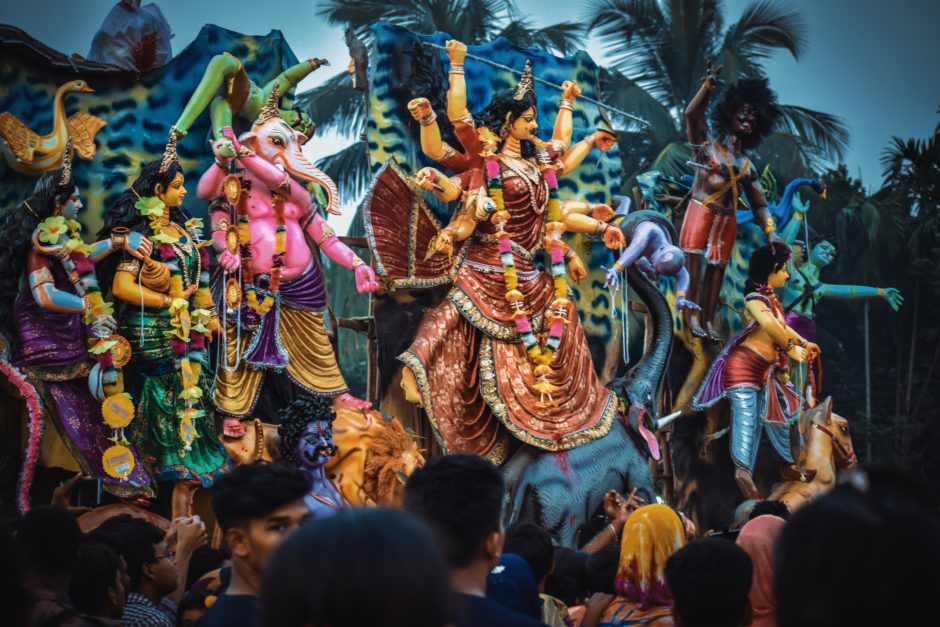
On Panchami, I have often gone to ‘receive’ Durga Maa into our homes. Meaning that a bunch of my committee members would head over to New Delhi Kali Bari where the idol was made (eco-friendly, of course) and transfer it to our pandal. Thus, the festivities were kickstarted.
Celebrations begin on Shashti, the sixth day. Most pandals have an Anando Mela in the evening where there are plenty of stalls for buying delicious home-cooked food. Over the next three days, there is a continuous cycle of heading to the pandal for doing anjali in the morning, having bhog in the afternoon, and then onward for pandal-hopping. Ashtami is one of the most important days of the festival as this is when the Shondhi Pujo takes place. During this, Durga is worshipped in her Chamunda form. The preparation for this takes hours as it requires 108 diyas and 108 lotus flowers among other things. In a close-knit pujo like mine, this is just another fun activity for everyone to do together, especially if the timing for the pujo happens to be in the middle of the night.
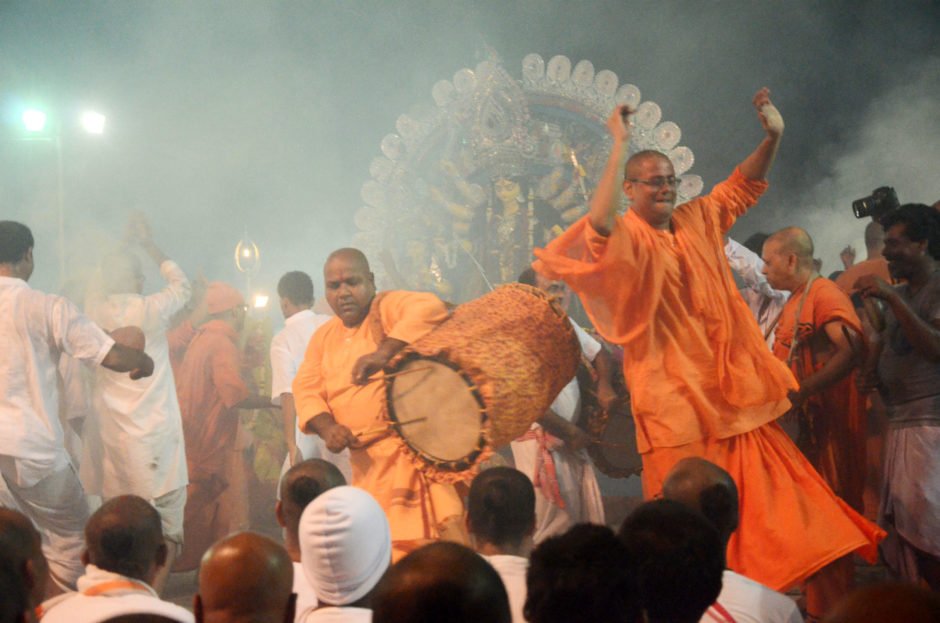
Every morning and evening during the aarti, the sound of the dhaak rings through the pandal. I consider the foot-tapping melody of this drum to be the ultimate tempation inviting me to pick up a dhunuchi and start dancing. A dhunuchi is a an earthen pot with a handle that is filled with burning coconut husk and camphor, used as a dance prop during Durga Pujo. An excellent mosquito repellent, I must observe!
Visarjan or immersion of the idol takes place on Dashami, that coincides with Dussehra. I remember going to the Yamuna ghats as a child and dancing to the dhaak till the buffalo cart came to whisk away Durga Maa for that year. Over the years, we have certainly realised the amount of pollution this causes to the river. Many committees which can afford it now choose to get eco-friendly idols and immerse it in a pit dug in their local field.
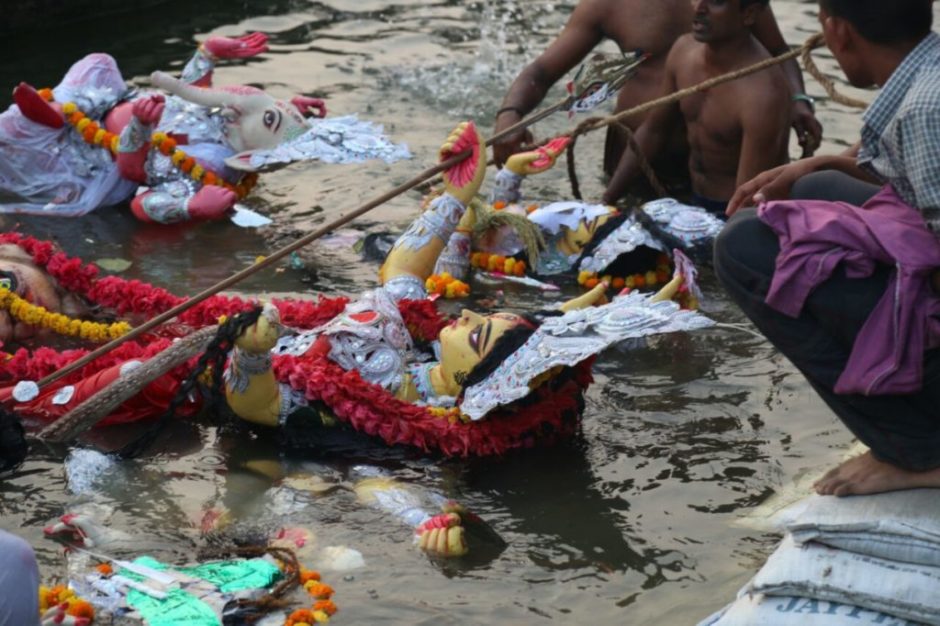
You see Durga Maa lying face down in the water, slowly getting submerged, and you heart sinks too. Another year of waiting has begun.
Meantime, here is a song to listen on repeat, because ‘pujo aashchhe’.

